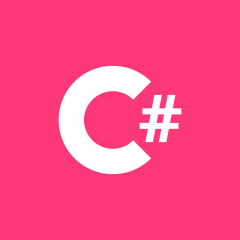从字符串加载板并存储在二维数组中
我正在尝试将由 1 和 0 组成的棋盘存储在二维数组中。我正在尝试将 3 组 3 个值返回到数组中,但它表示 csvArray[][] 中需要一个值。
我已经创建了一个由 1 和 0 组成的字符串,并将它们分成由“\n”分隔的子字符串
int[][] loadBoardfromString(string Data)
{
string csvBoard = "0,1,0\n2,0,1\n0,0,1";
string[] csvArray = csvBoard.Split('\n');
return csvArray[][];
}
 浮云间
浮云间浏览 124回答 2
2回答
-

心有法竹
这是您需要的: string csvBoard = "0,1,0\n2,0,1\n0,0,1"; int[][] csvArray = csvBoard .Split('\n') // { "0,1,0", "2,0,1", "0,0,1" } .Select(x => x .Split(',') // { "X", "Y", "Z" } .Select(y => int.Parse(y)) // { X, Y, Z } .ToArray()) .ToArray(); -

人到中年有点甜
我猜这是某种家庭作业,所以我会尝试使用最基本的解决方案,这样老师就不知道了:)。 string csvBoard = "0,1,0\n2,0,1\n0,0,1"; // This splits the csv text into rows and each is a string string[] rows = csvBoard.Split('\n'); // Need to alocate a array of the same size as your csv table int[,] table = new int[3, 3]; // It will go over each row for (int i = 0; i < rows.Length; i++) { // This will split the row on , and you will get string of columns string[] columns = rows[i].Split(','); for (int j = 0; j < columns.Length; j++) { //all is left is to set the value to it's location since the column contains string need to parse the values to integers table[i, j] = int.Parse(columns[j]); } } // For jagged array and some linq var tableJagged = csvBoard.Split('\n') .Select(row => row.Split(',') .Select(column => int.Parse(column)) .ToArray()) .ToArray();这是我关于如何改进它以便学习这些概念的建议。制作一个更适用的方法,无论大小如何,它都可以溢出任何随机 csv,并返回一个二维数组而不是锯齿状数组。当有人没有将有效的 csv 文本作为参数放入您的方法时,也尝试处理这种情况。
 随时随地看视频慕课网APP
随时随地看视频慕课网APP
相关分类


 C#
C#